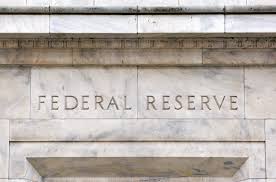
According to a statement from the United States Federal Reserve Governor Christopher Waller, it is probable that the fed could begin to push the brakes on its balance sheet runoff as soon as the reserves of the bank touch about 10% to 11% of the gross domestic product of the country.
"We'll start slowing as we approach maybe reserves being 10% to 11% of GDP," Waller said at a Council of Foreign Relations event in New York.
"And then we'll kind of feel our way around to see where we should stop," he added.
Fed reserves of cash was around 8% to 9% of GDP of the US, Waller had noted back in January 2019, and had then remarked that "everything was working fine". He had however also conceded that there are arguments within the Fed about the reserve level needed ot be a little higher in terms of a percentage of the US GDP.
The current balance sheet of the Fed is at about $8.5 trillion and its portfolio of investments comprises of Treasury and mortgage-backed securities as assets against the liabilities which is represented by the reserves that banks deposit with the US central bank, as well as against the overnight repurchase agreements that are deposited in the Fed too.
The total of the reserves and repurchase agreements that the Fee currently holds is a little more than $5.6 trillion, or roughly about 22% of the gross domestic product of the US as of the end of the third quarter of last year.
The strategy undertaken by the Fed currently is to reduce its Treasury holdings by as much as $60 billion per month and its holdings in MBS is targeted to be reduced be by as much as $35 billion every month. As soon as the amount of reserves that it requires to hold is determined by the Fed, it is likely that the US central bank would halt the above mentioned process.
(Source:www.usnews.com)
"We'll start slowing as we approach maybe reserves being 10% to 11% of GDP," Waller said at a Council of Foreign Relations event in New York.
"And then we'll kind of feel our way around to see where we should stop," he added.
Fed reserves of cash was around 8% to 9% of GDP of the US, Waller had noted back in January 2019, and had then remarked that "everything was working fine". He had however also conceded that there are arguments within the Fed about the reserve level needed ot be a little higher in terms of a percentage of the US GDP.
The current balance sheet of the Fed is at about $8.5 trillion and its portfolio of investments comprises of Treasury and mortgage-backed securities as assets against the liabilities which is represented by the reserves that banks deposit with the US central bank, as well as against the overnight repurchase agreements that are deposited in the Fed too.
The total of the reserves and repurchase agreements that the Fee currently holds is a little more than $5.6 trillion, or roughly about 22% of the gross domestic product of the US as of the end of the third quarter of last year.
The strategy undertaken by the Fed currently is to reduce its Treasury holdings by as much as $60 billion per month and its holdings in MBS is targeted to be reduced be by as much as $35 billion every month. As soon as the amount of reserves that it requires to hold is determined by the Fed, it is likely that the US central bank would halt the above mentioned process.
(Source:www.usnews.com)





